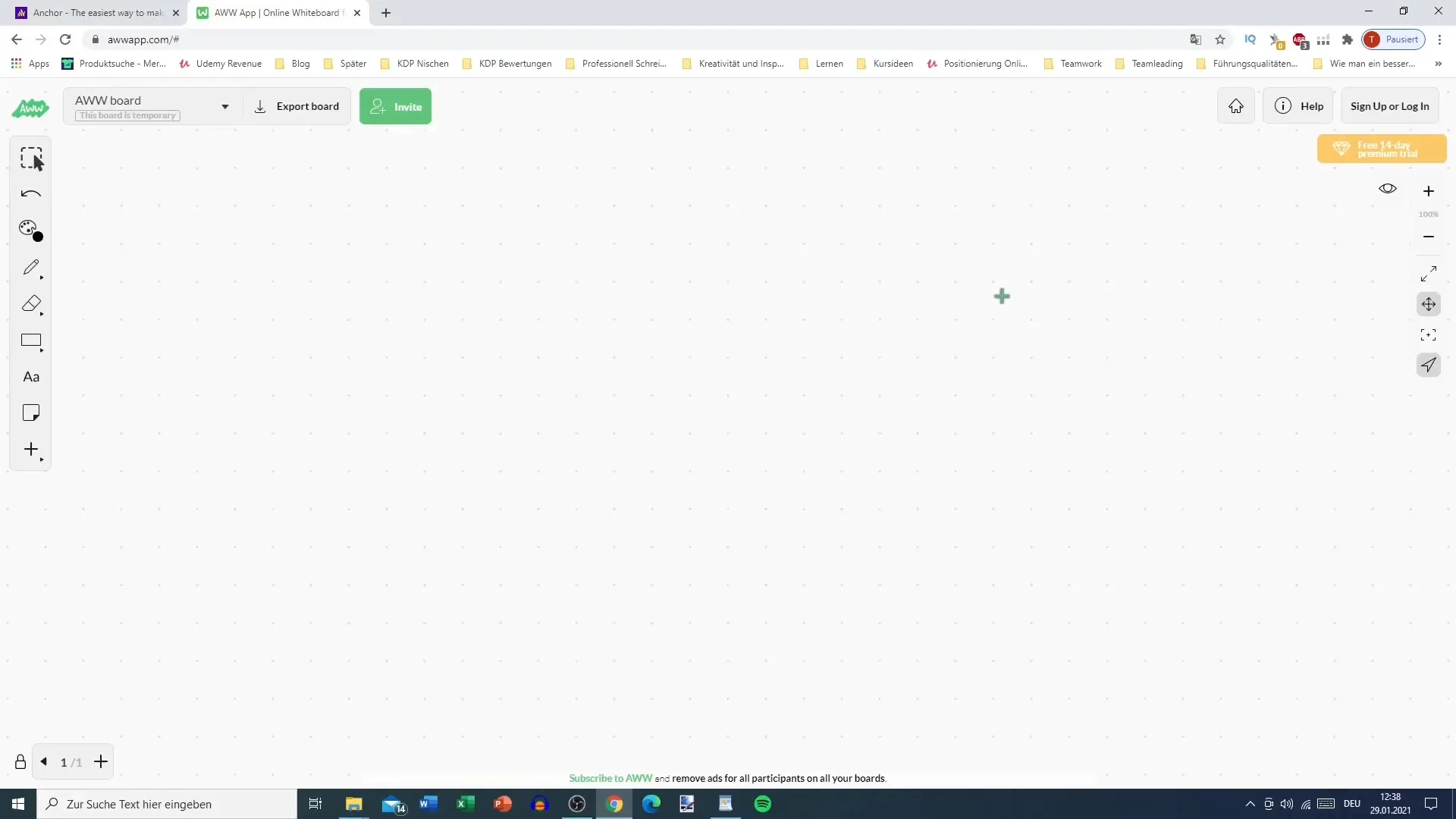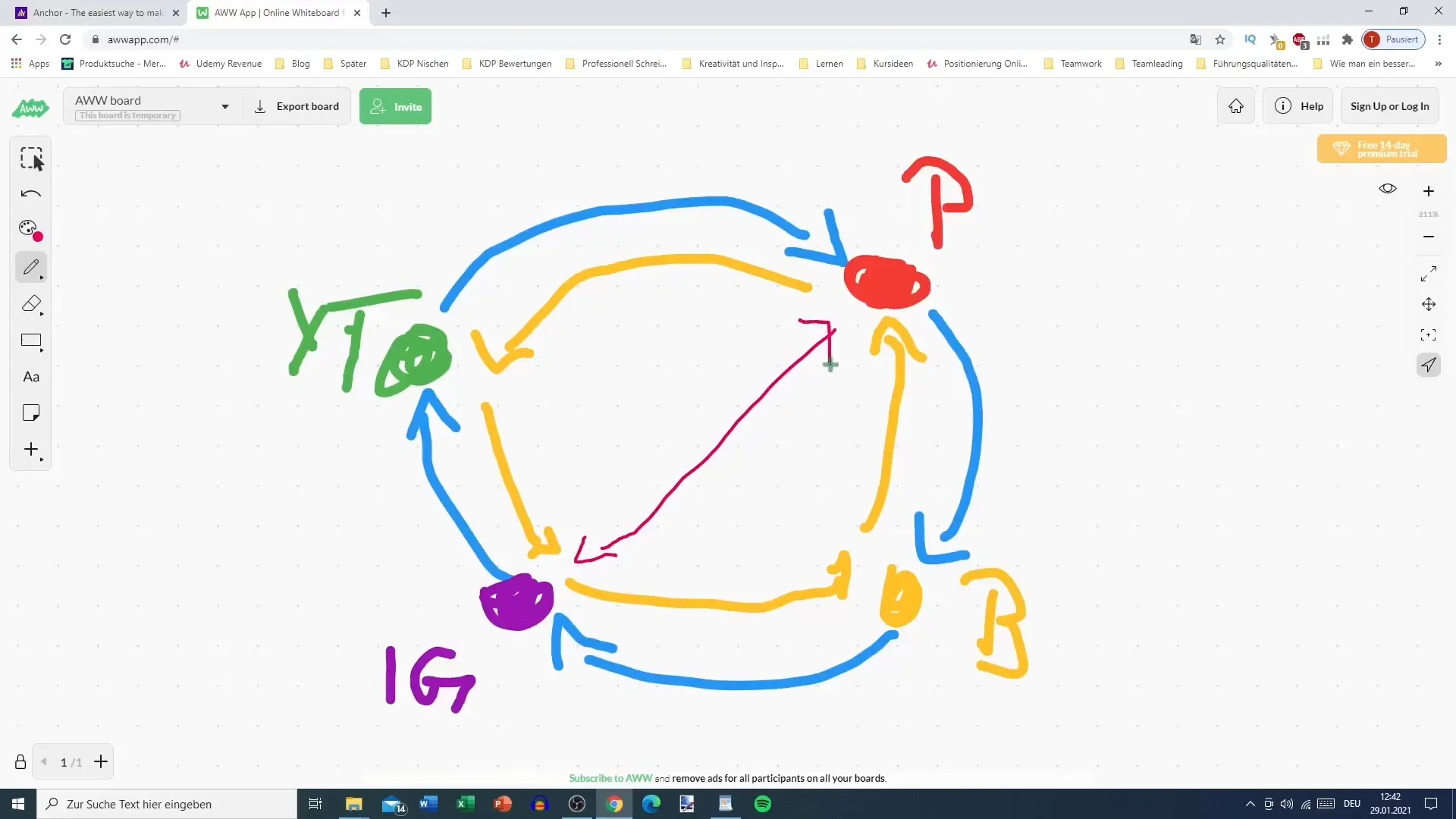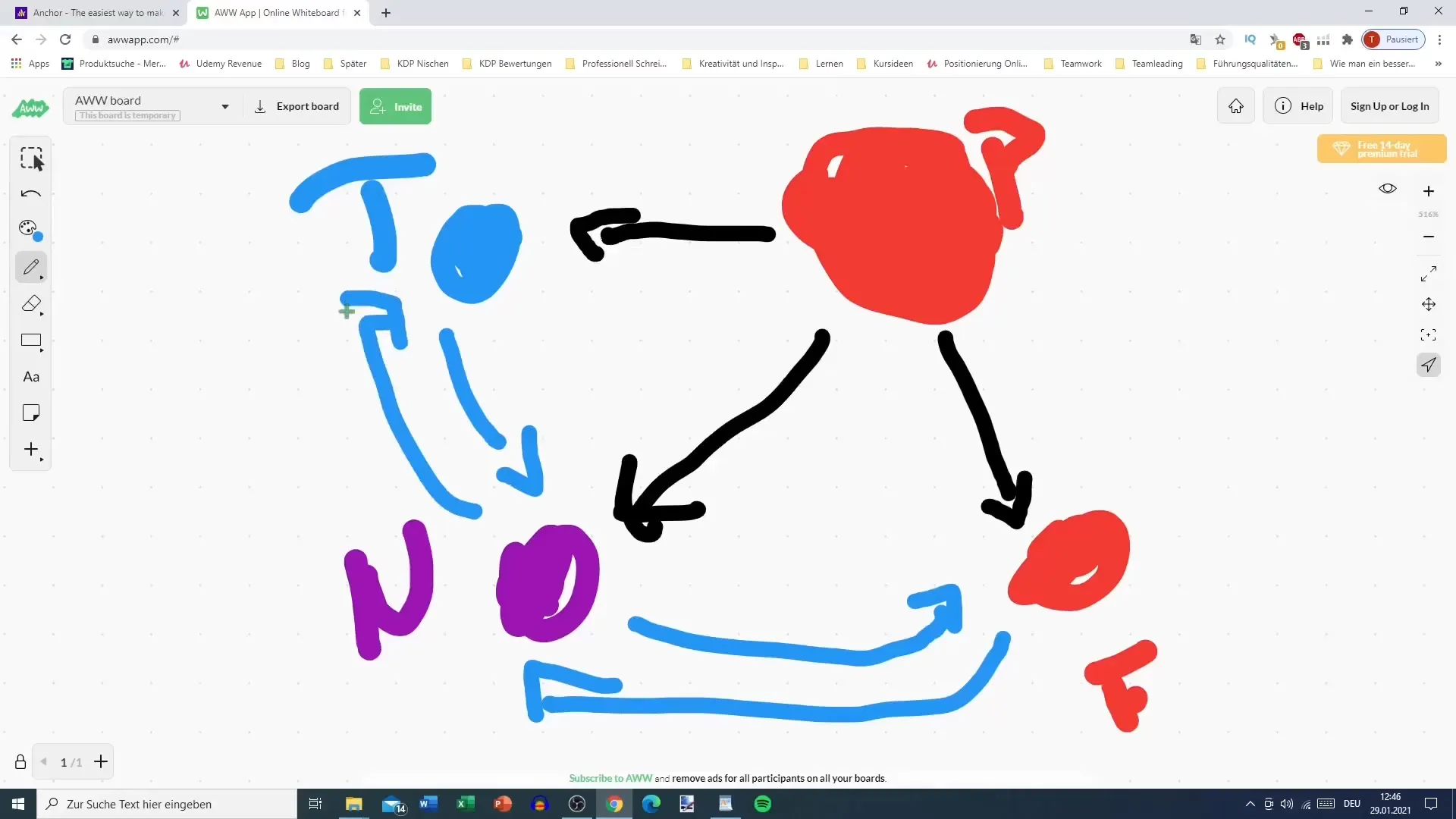The Traffic Circle is a concept that differs from the traditional Sales Funnel and represents a sustainable method of connecting various digital platforms. If you want to maximize your reach and fully leverage the potential of your content, it makes sense to understand and apply this concept in your marketing strategy. Let's find out how you can work more effectively with a Traffic Circle.
Key Insights
- The Traffic Circle allows you to connect multiple platforms and leverage their strengths.
- It is more flexible than a funnel and ensures that you maintain your visibility and reach, even if one platform disappears.
- Cross-promotion is a key element to direct traffic between platforms.
- It is sufficient to start with at least two platforms and build up from there.
Step-by-Step Guide
Step 1: Understanding the Traffic Circle
In this phase, you should clearly delineate the difference between a traditional Sales Funnel and a Traffic Circle. The Funnel consists of multiple stages where potential buyers go through a linear process until they make a purchase. This is often represented in the form of a funnel, where you go from a large number of interested parties to a few buyers.

The Traffic Circle, on the other hand, describes a closed unit where different platforms interact with each other and mutual promotion takes place. You thus create a network that allows visitors to seamlessly switch between your offerings.
Step 2: Choosing the Platforms
For your Traffic Circle, you choose several platforms that you want to link together. Typical examples are your blog, your YouTube channel, Instagram, and a podcast. The selection is flexible and should be based on your personal skills and preferences.
A possible selection could be:
- Podcast for audio content
- Blog for in-depth insights and articles
- Instagram for visual content and interaction
- YouTube for video content
Step 3: Implementing Cross-Promotion
After selecting the platforms, it's time to start cross-promotion. This means placing links and references in your content that encourage visitors to check out your other platforms.
One example could be: "Visit my blog for more in-depth content on this topic" in your podcast or "Also, check out my new video on YouTube!" in your Instagram post. It is important to ensure that these cross-references are organically integrated into your content.
Step 4: Flexibility and Adaptability
An essential advantage of the Traffic Circle is its flexibility. If you lose a platform, your other connections remain intact. You can easily adjust the structure.
For example, if your blog stops working, you can still link from Instagram to your podcast. This adaptability ensures that you don't suddenly end up with a "dead endpoint" if a platform disappears.
Step 5: Building a New Community
The Traffic Circle also allows you to build new communities through the synergies between different platforms. For example, if you introduce a new newsletter, you can easily promote it across your podcast, blog, and social media.
Furthermore, it is important that these newly formed communities in turn promote your existing channels. This closes the circle and promotes healthy growth across all platforms.

Step 6: Developing Long-Term Strategies
In the long run, you should set goals that go beyond short-term sales. Focus on building a strong brand that can serve its target audience across different channels.

You can also consider integrating different income streams, such as affiliate marketing or sponsorship. This should be incorporated into your strategy once your Traffic Circle is established.
Summary
The Traffic Circle is a dynamic tool that helps you increase your reach and visibility in various digital media. By creating a solid network, you can ensure that even if one platform disappears, you still have other channels to reach your audience and engage them with your content. Use cross-promotion to maximize the full potential of your platforms.
Frequently Asked Questions
What is a Traffic Circle?The Traffic Circle is a concept that connects multiple digital platforms and promotes the exchange of traffic.
How does Cross-Promotion work in the Traffic Circle?Cross-promotion means integrating links and references in your content to draw attention to your other platforms.
What should I do if a platform collapses?The Traffic Circle is so flexible that you can easily adjust the structure by continuing promotions on other platforms.
Can I start the Traffic Circle with only two platforms?Yes, you can start with two platforms and gradually expand it based on growth and needs.
How important is long-term marketing through the Traffic Circle?Longevity is crucial to building a strong brand and establishing sustainable revenue streams.


